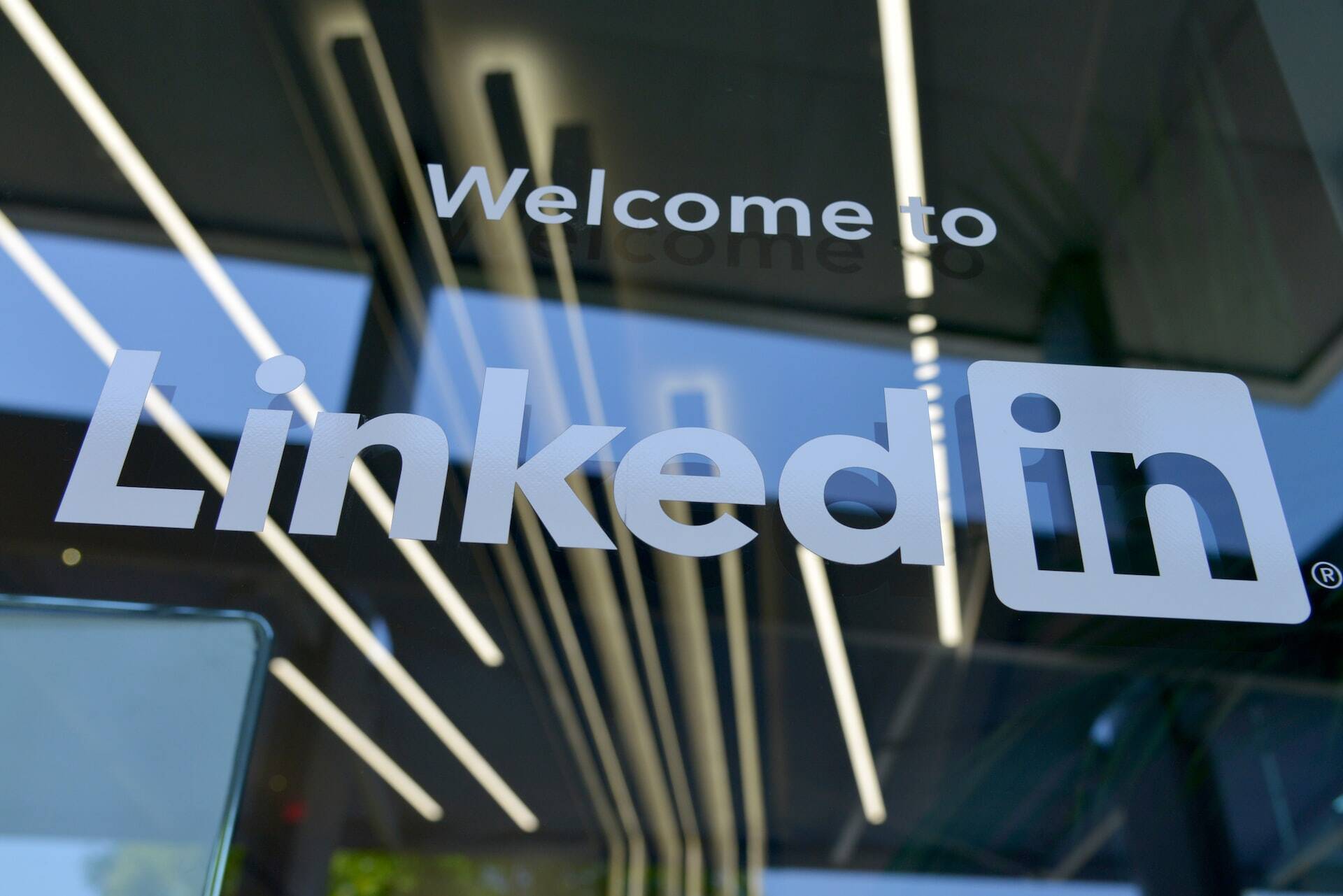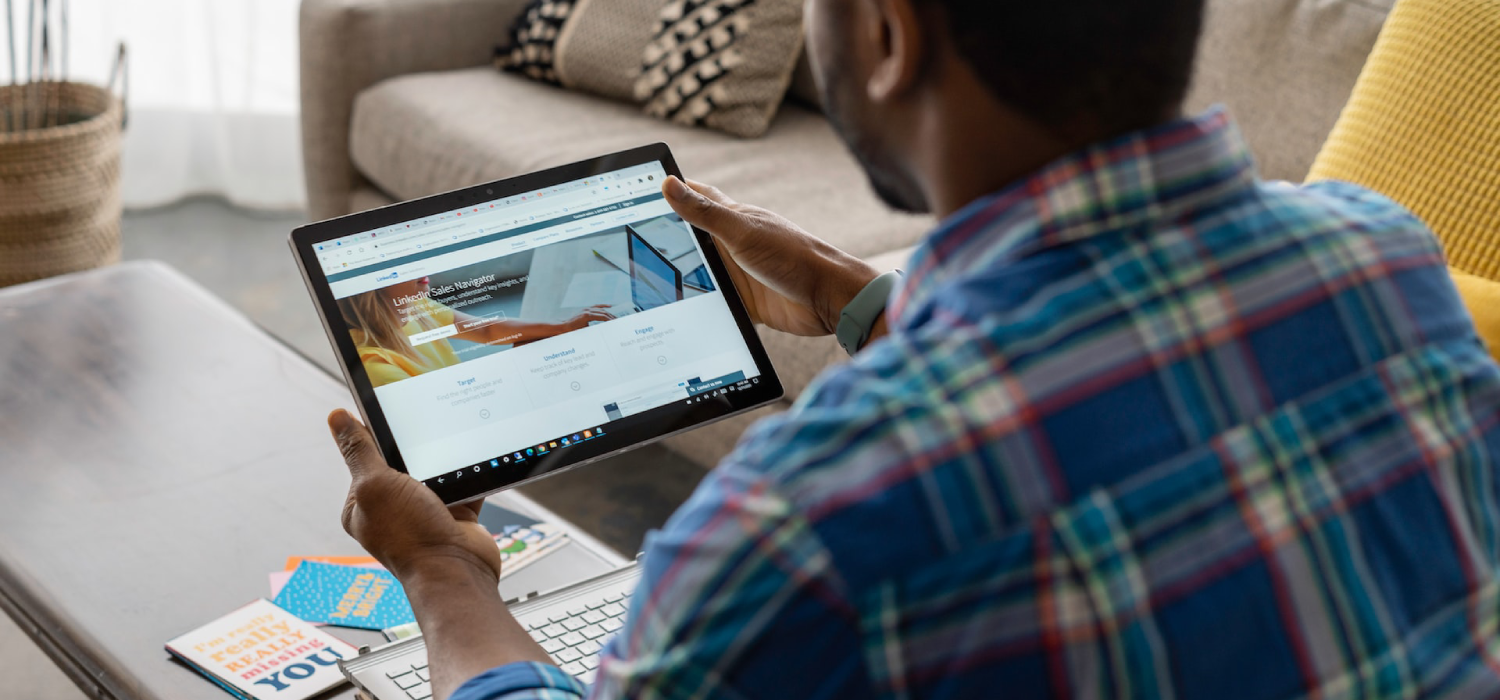One of the biggest challenges faced by any entrepreneur or sales manager is generating qualified leads that are more likely to become loyal customers.
However, many companies are still stuck in their old strategies, making this challenge bigger than necessary - especially taking into account the radical changes in the consumer behavior. And, in this scenario, it is clear that lead generation techniques would also need to evolve.
Undoubtedly, LinkedIn has become a gold mine for any sales team that needs to generate qualified leads efficiently nowadays.
Follow this article where we will discuss some of the most effective lead generation tactics through LinkedIn.
Why use LinkedIn for lead generation?

If you had to focus on just one channel for your B2B company's lead generation, our advice is that this channel should be LinkedIn.
LinkedIn was voted the most trusted network of 2020, and its B2B and B2C user traffic had a 277% higher conversion rate compared to Facebook and Twitter - a number proven in a study of 5,000 companies.
If this data still hasn't convinced you, check out more reasons to choose LinkedIn as part of your lead generation strategy:
1. Users are very active
LinkedIn has over 500 million users, and more than half of them (260 million, to be exact) actively use the platform every month. Among these 260 million users, 44% log in every day. This means that there are a lot of potential leads to engage with on a regular basis.
2. It's perfect for B2B lead generation
LinkedIn Ads allow marketers to be extremely thorough about the audiences they want to reach. Below are just a few of the many targeting options that exist in the ad network setup:
- company name
- company sector
- company size
- employee's position
- employee responsibilities
- employee tenure
- employee preferences
While competitors like Facebook Ads also allow advertisers to target users by company and job position, Mark Zuckerberg's network is not intended to share job positions on profiles, and it's quite possible that the public is not listing their employment, making this channel less ideal for reaching the B2B audience.
3. It is the favorite of marketing and sales professionals
According to the Sophisticated Marketer’s Guide to LinkedIn, 94% of sales and marketing professionals use LinkedIn to distribute content. This means that either many professionals are wrong, or many people are on the right track.
In any case, you'd be a fool to overlook what 94% of your competitors are already taking advantage of.
4. It has its own lead generation tools
Among the various functions that LinkedIn presents to users, specifically for lead generation, there is a universe of options that can lead your company to sell more and more and with more quality. See below:
- LinkedIn Company page
- LinkedIn Pulse
- LinkedIn Groups
- Sponsored Content and InMail
- LinkedIn Ads
- LinkedIn Lead Gen Forms
- LinkedIn Sales Navigator
Now let's understand how to use these features to generate leads in this amazing tool.
How to Generate Leads on LinkedIn

Many of the actions you already take on LinkedIn on a daily basis can help you find good leads. Maybe you just need to think a little more strategically to get the most out of this amazing platform.
Here are some examples of how you can generate leads through the tools provided by LinkedIn itself:
Company page
This may seem like basic information, but the strength of your LinkedIn company page is extremely important in the lead generation process. Do you want to generate leads with a specific profile? Increase your business followers? Entice your audience to listen to what you have to say? So it's important that your company page tells a good story and shows your value, just as your company website probably already does.
If your LinkedIn profile is not suited for these purposes, it doesn't matter how many top decision makers are on the platform - none of them are going to buy from you.
After all, you shouldn't receive a client in a company (even a virtual one) without "tidying up the house". So, start your lead generation strategy by organizing your company page.
Also, don't forget to keep your page's profile fed with relevant content, so that the target audience sees your company as a reference in your work niche.
You can create content from images, videos, infographics, live webinars, and much more to engage your precious potential customer on this relevant platform.
LinkedIn Pulse
The LinkedIn Pulse publishing platform makes your content categorized by keywords - so if you decide to write about topics that interest your audience, there's a good chance they'll be seen by the right people, generating genuine interest in your business.

So, similar to content optimization for search engines, use SEO rules when writing your articles for LinkedIn Pulse. This will give the platform’s algorithm an idea of what your content is about, which helps show it to the right audience.
LinkedIn Groups
One way to get more attention to your posts without paying for ads (a strategy we'll discuss later in this article) is to post on LinkedIn Groups. As the name suggests, these are groups that users can choose to join and participate based on their professional interests.
Share relevant and valuable content in these groups and you are guaranteed a captive audience interested in what you have to say.
Find the appropriate groups for your persona by typing your customer's job title into the search bar and clicking on the "Groups" filter.
Ask to join the groups you found most relevant. Once accepted, don't treat this as an opportunity to start selling like crazy - that's not an interesting practice, and you could be banned.
Instead, build your reputation among your prospects by sharing content that adds genuine value and contributing to conversations. Once you've engaged in meaningful discussions, and connected with group members, send them InMail messages to start moving towards a sales pitch.

Sponsored Content and InMail
On LinkedIn, you can sponsor content posted on your profile to appear in the newsfeed of the audience you've targeted (in the same way you would create ads for posts on Facebook). They are similar in appearance, containing an image, text and a call-to-action followed by a link leading to your final destination of interest.

LinkedIn's InMail sponsored messaging service is one of the most useful resources for marketing and sales professionals using the platform. They're essentially direct, promoted messages that you can send to LinkedIn members based on demographics you've selected.
You can use InMails to connect with industry experts as well as generate B2B leads.
LinkedIn recently changed the name of this sponsored service to Message Ads, although you'll still see people referring to it as Sponsored InMail.
LinkedIn Ads
In addition to the sponsored post formats (Sponsored Content) and sponsored InMails (Sponsored InMail) mentioned in the previous topic, it is possible to create ads from scratch, with a wide variety of formats and media and the name is LinkedIn Ads.
In addition to the company page, you will need to create a LinkedIn Business Ad Account for free, just like you do with Facebook Business.
Much of the data that LinkedIn uses to target these ads is obtained directly from its members. If used correctly, this accurate, actionable, real-time, first-person data will bring your business face-to-face with your most valuable audiences. Just don't forget to create amazing images and messages for the ads!
LinkedIn Lead Gen Forms
Still connected to the previous two topics, LinkedIn Lead Gen Forms is a tool that allows advertisers to embed a specific type of form in ads, which is pre-populated with information from LinkedIn member profiles. This helps to improve the lead's experience, as it will not be necessary for them to go to your website or landing page to fill out a form with their data from scratch, creating more chances of conversion for your company.
You can embed a form in your sponsored content campaigns to acquire lead information, and, of course, this form should be accessed via mobile or desktop by the user.
LinkedIn Sales Navigator
Well, we saved the best for last!
LinkedIn Sales Navigator is LinkedIn's own solution for prospecting and finding leads. It enhances the existing features of the platform to offer a much more premium experience for those with a focus on lead generation.
A good example is the advanced lead search function. You can enter the characteristics of your ideal customer to find leads that are more relevant to your business.

Sales Navigator can also make recommendations on who is likely to be your best point of contact for a business you might want to prospect. It will also let you know if something important happens, like a contact who has changed jobs, for example.
While Sales Navigator can provide a detailed view of who has visited your LinkedIn profile over the last 90 days, it cannot identify who has visited your website or indicate how interested they are in your business. For this reason, good prospecting work goes hand in hand with lead generation.
To use LinkedIn Sales Navigator, you just need to fill out a form on the website for a free demo. After the end of this trial, the monthly payment will be charged.
*Bonus: Seamless.AI
Seamless.AI is an app and Chrome extension that focuses on searching users and their job roles.
This tool has a lot in common with other apps in this industry, including searching for companies and people based on location, industry, job title, etc. However, Seamless stands out for allowing this search for contact information within LinkedIn as well. It guarantees a search of more than 150 million companies, 250,000 news websites, a billion social network profiles and much more. This allows you to find the contact that you might not find in other tools in this niche.
When searching for companies, Seamless.AI describes industry, company size and location, and provides links to each company's website and social media centrally.
It also offers a variety of options when it comes to searching, sorting and saving this large amount of information, ensuring that this list is organized - a very important task for any pre-sales professional. You can export the raw data, which is provided in an Excel document, containing all the information that Seamless.AI has found for the selected contacts.
Overall, Seamless.AI is a very versatile and powerful tool and is definitely worth checking out.
Start generating more leads with LinkedIn

If you are a B2B company then statistically you are more likely to find qualified leads on LinkedIn.
This social network is a veritable treasure trove of useful lead-generation tools and potential customers who are eager to learn about the benefits of your product or service.
But nothing good happens overnight.
Don't try to take shortcuts by firing thousands of messages to hundreds of leads generated on LinkedIn. Doing so, it is very likely that you will be seen as spam, at the risk of alienating potential future customers along the way.
Take the time to find the right leads, start meaningful conversations and share valuable content, and the chances of converting those contacts into long-term customers will be much higher.




